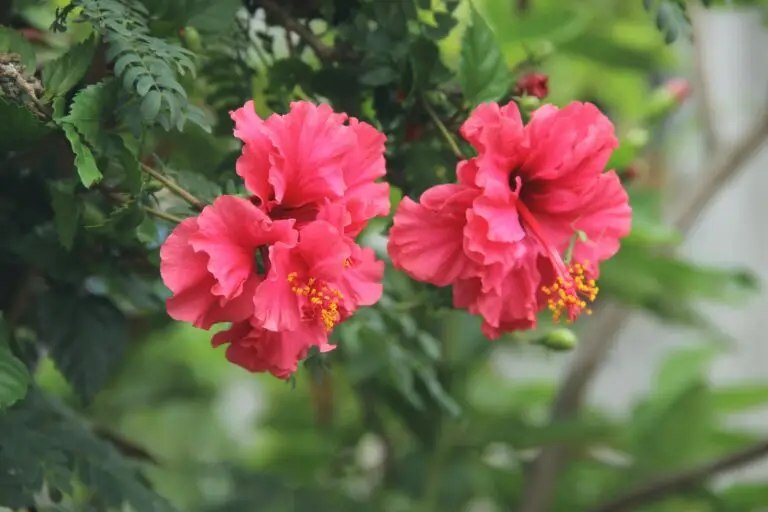Hibiscus trees are beautiful and draw in visitors and insects with their big, colorful flowers. To make sure your tree stays healthy and beautiful all year, it’s important to give it the right care. This guide will explain all the steps you need to take to keep your hibiscus tree in great shape.
Choosing the Right Location for Your Hibiscus Tree
To make your hibiscus tree’s flowers look great put it in a spot that gets at least 6 hours of direct sunlight every day. More sun means brighter flowers. But, if it’s very hot where you live, a place with some shade in the afternoon can keep the leaves from getting too hot.
Hibiscus trees are like soil that drains well and has a lot of organic matter. To make the soil better, add compost or well-rotted manure. If your soil is too heavy clay or sandy, you might need to change it to make it perfect for growing hibiscus trees.
Watering
To help your hibiscus tree grow well, make sure to water it regularly, but not too much. Water it deeply once a week, and if it’s hot outside, you might need to water it more often.
Make sure the soil is dry before doing anything.
Hibiscus trees need water, but too much can cause root rot. Ensure the pot or bed drains well and don’t let the tree stay in water. Check the soil first; if it’s dry to the touch, water.
Feeding
Choose a balanced fertilizer for your hibiscus tree to encourage growth and blooms. Look for one with more potassium than phosphorus, like a 17-5-24 mix. Fertilize every two weeks during the growing season for best results.
For organic gardeners, using compost tea or fish emulsion can give your hibiscus tree the nutrients it needs. These natural fertilizers not only nourish the tree but also make the soil healthier, which helps the plant grow better.
Pruning
Pruning is important for keeping your hibiscus tree healthy and looking good. It’s best to do it in early spring before new leaves grow. Remove any dead or crossing branches, and cut the tree down by about one-third to make it grow fuller and produce more flowers.
To make your hibiscus tree look more like a tree, trim the lower branches to form a single trunk. If you prefer a fuller, bushier look, cut the tips of the branches to promote more growth. Regular pruning will help your hibiscus tree stay healthy and produce lots of flowers.
Pest and Disease Management
Hibiscus can attract pests such as aphids, whiteflies, and spider mites. Check your tree often for these pests and use natural solutions like insecticidal soap or neem oil to treat them. These methods are safe for the environment.
To stop root rot and leaf spots in hibiscus, make sure water drains well and avoid watering from above to prevent fungus. If disease is found, remove the damaged parts and use a suitable fungicide promptly.
Overwintering
In colder areas, your hibiscus might not make it through winter outside. Before the first frost, move the tree inside to a sunny place. Water it less in winter, but make sure the soil stays slightly wet.
Get your hibiscus ready for the next season by slowly bringing it back outside. Begin by leaving it outside during the day and bringing it in at night. After the frost risk is over, you can move it back outside and continue to take care of it as usual.
Taking care of a hibiscus is easy but needs regular attention. Learn how to give it the right amount of sun, water, and food, trim it, and deal with bugs to have a beautiful, long-lasting tree in your garden. If you want to add a gorgeous hibiscus to your garden, look for some on Amazon.
You can also grow hibiscus flowers in your garden. If you want to learn how to grow and take care of hibiscus flowers, then click on this link- Hibiscus Flowers.




